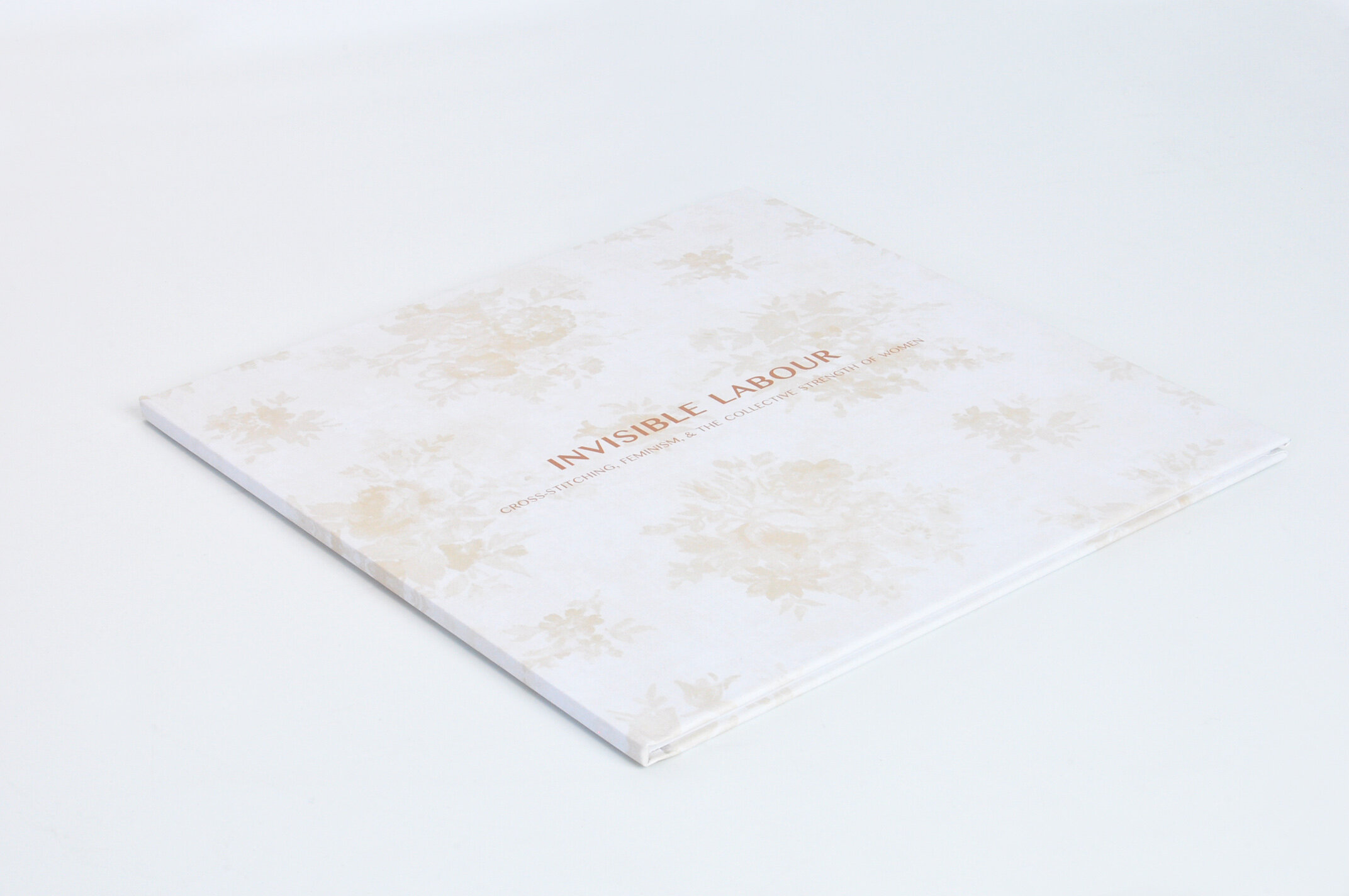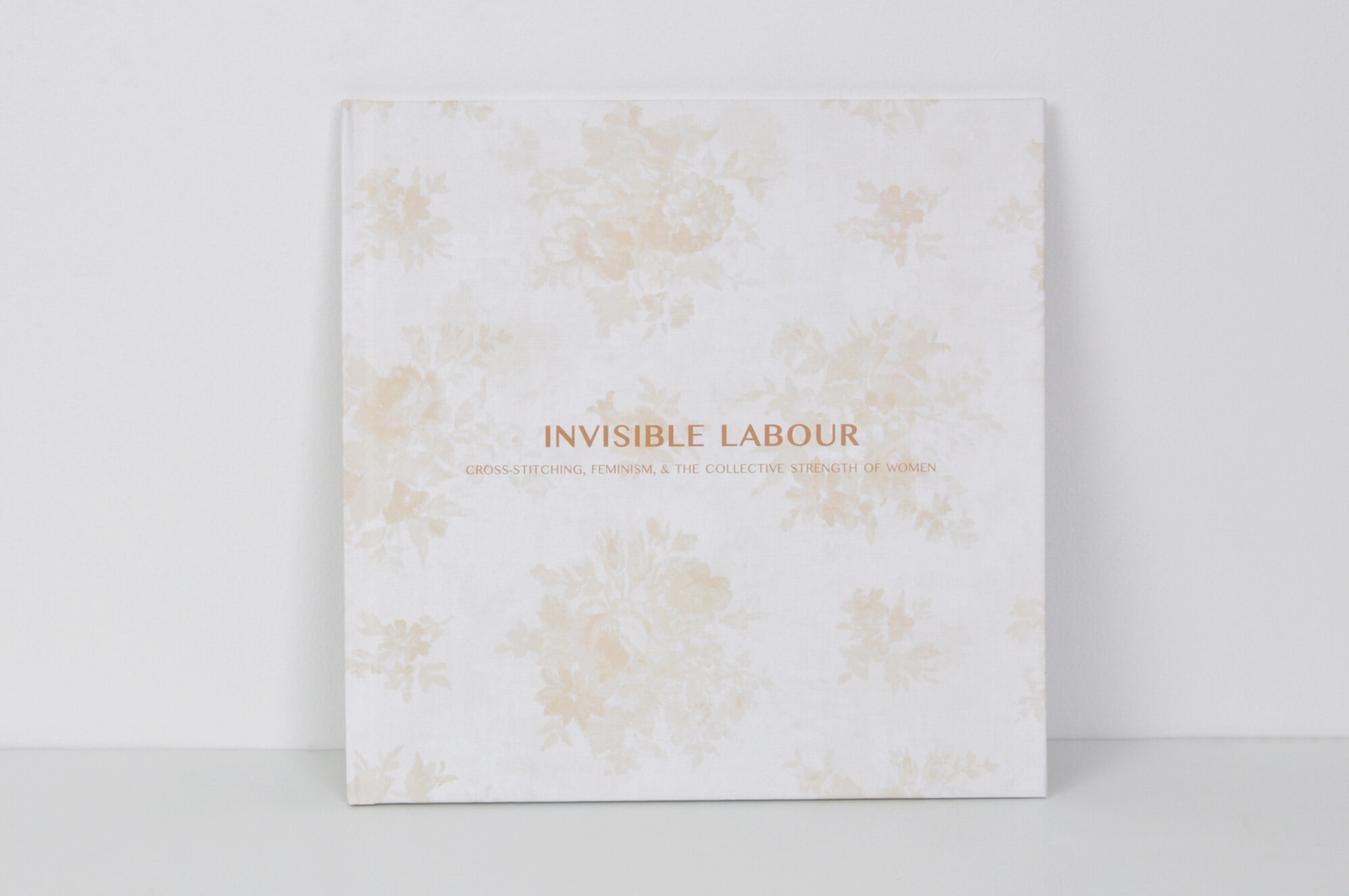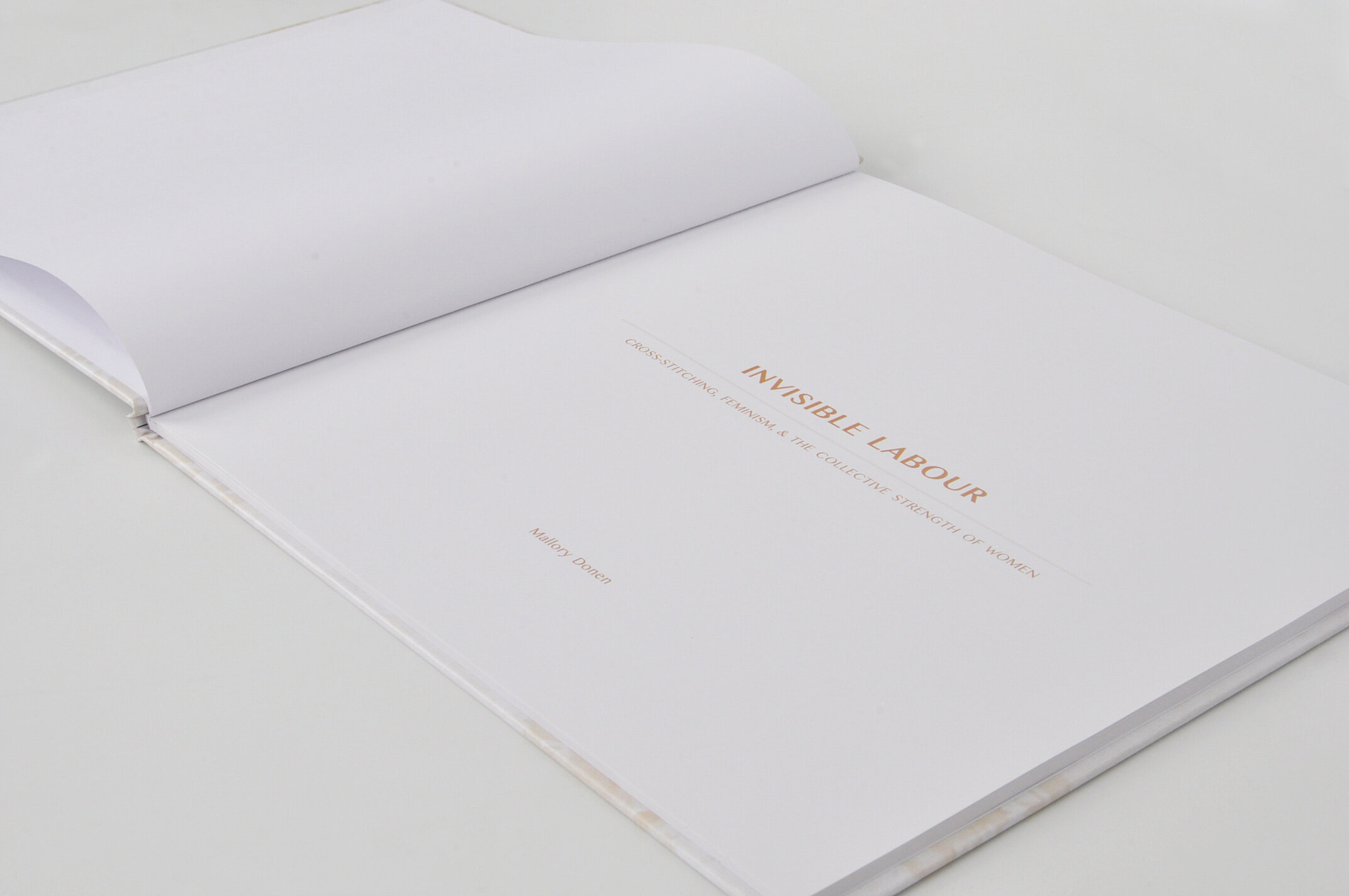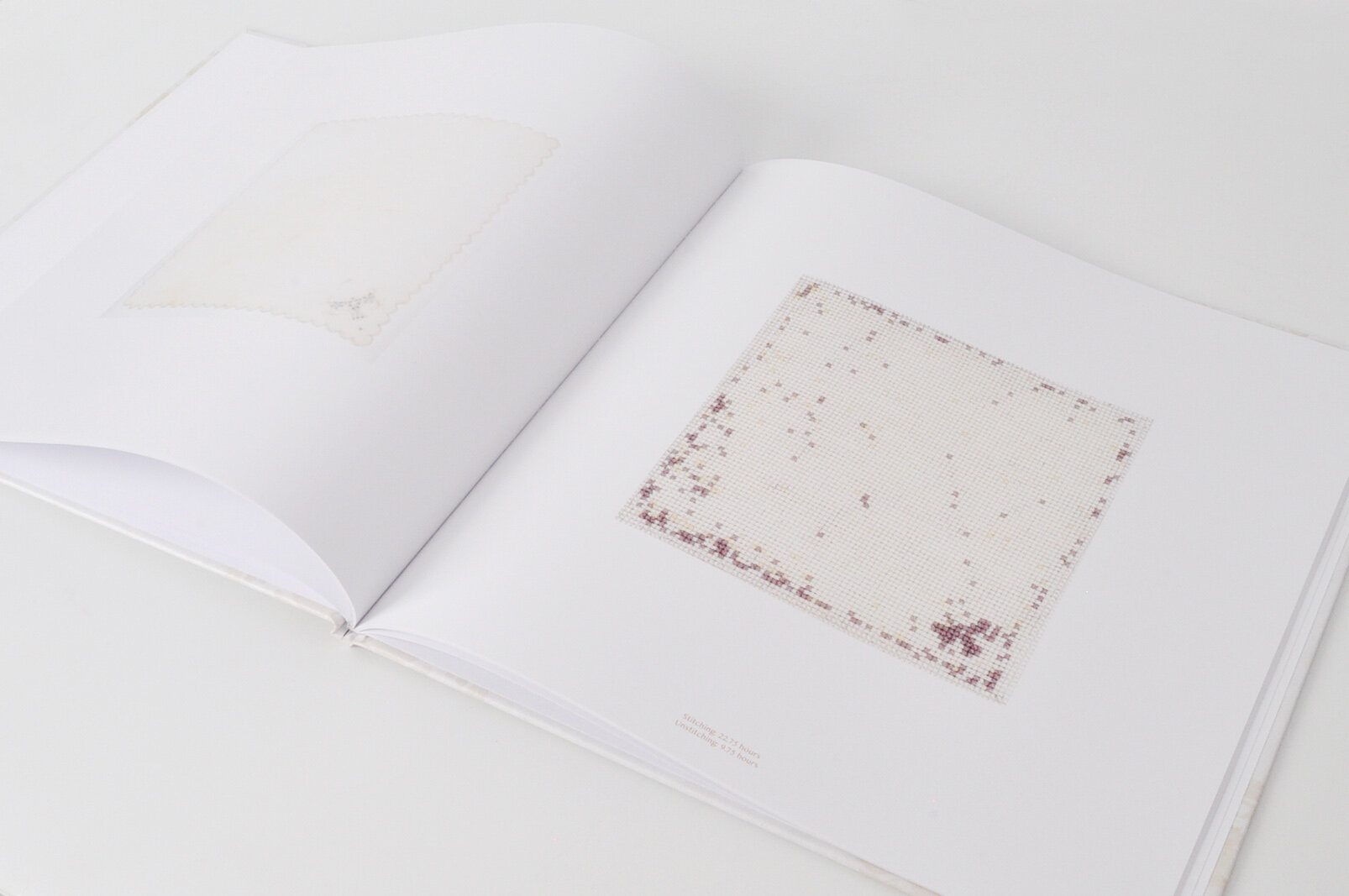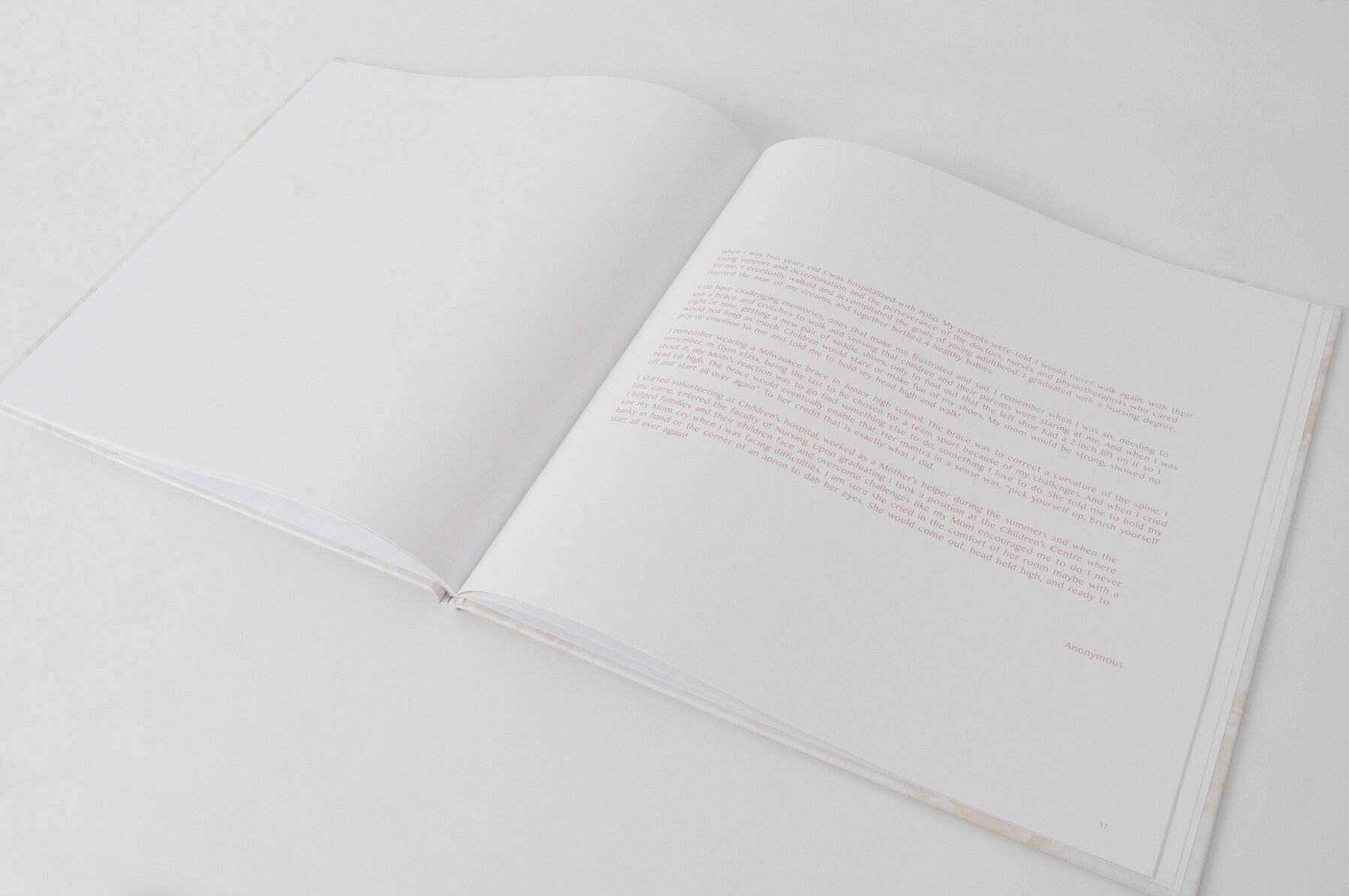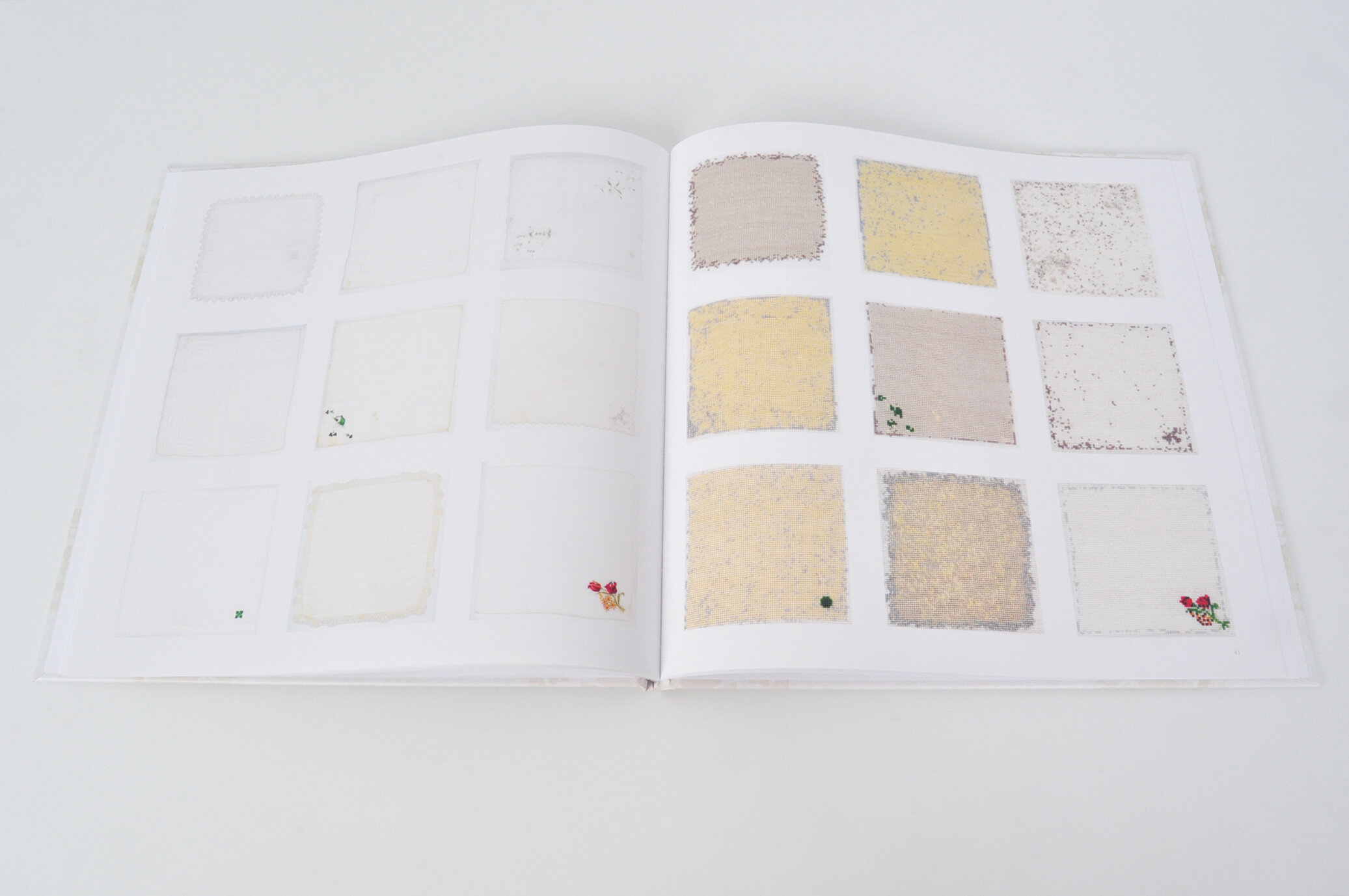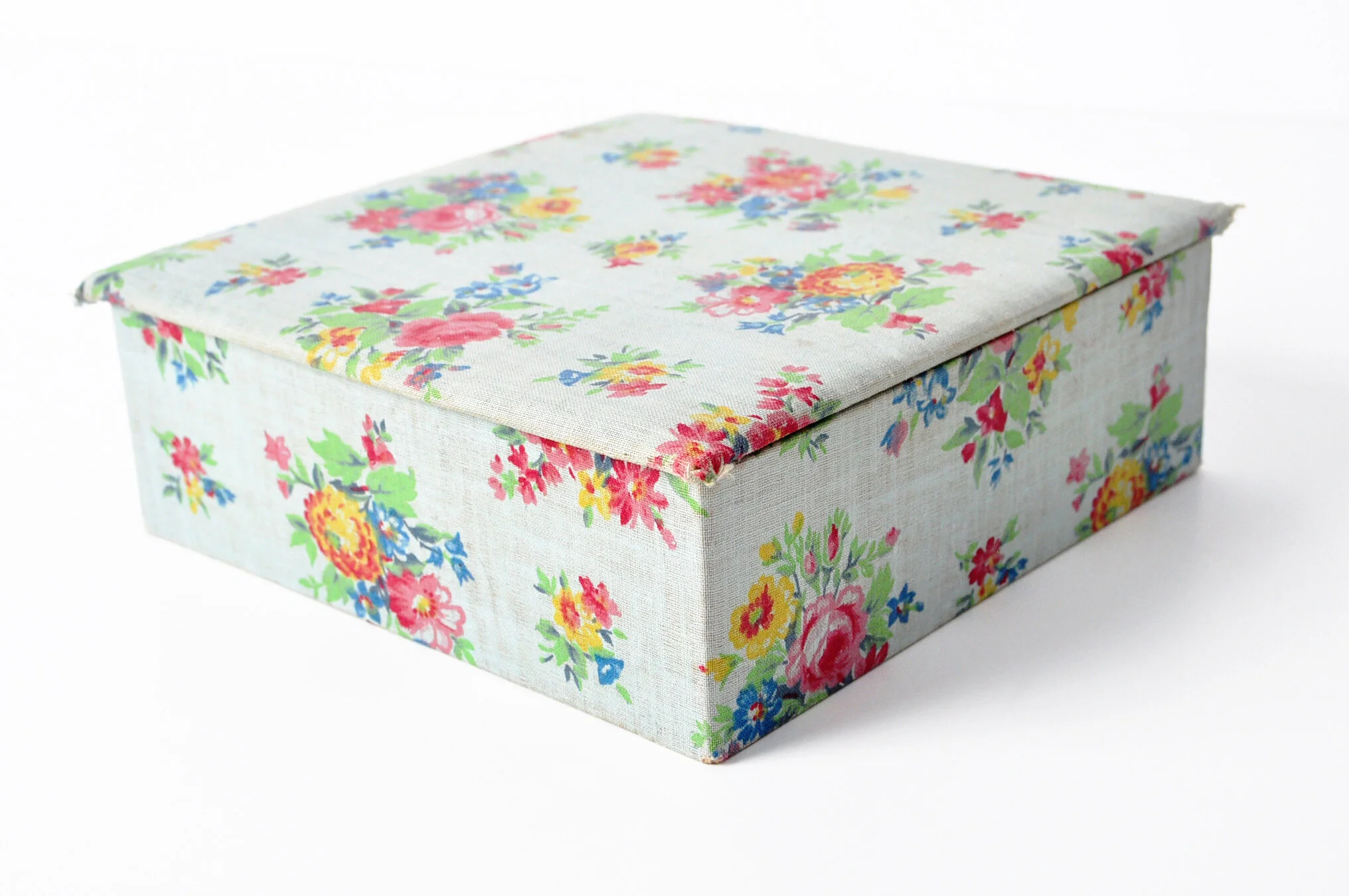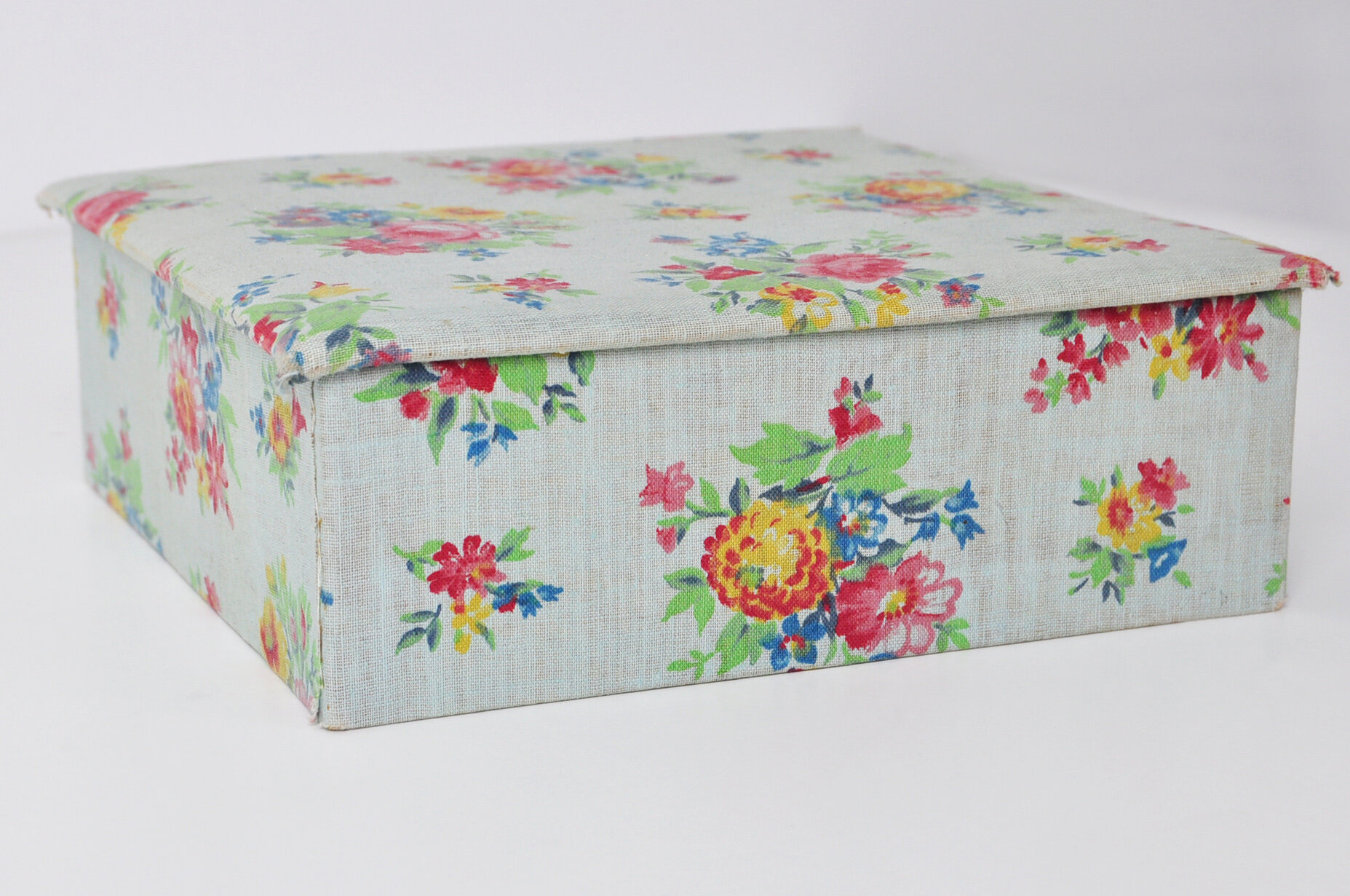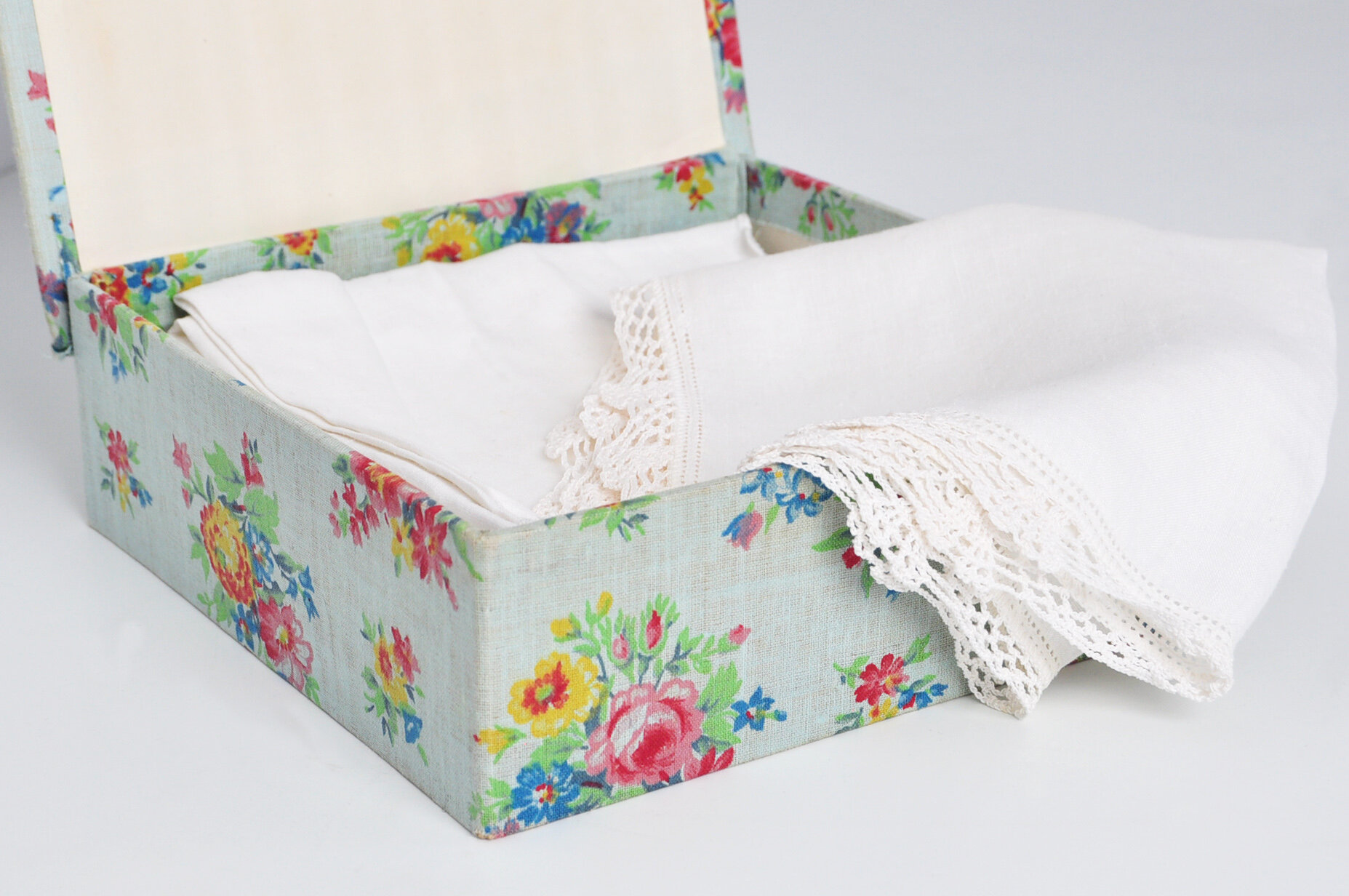(Cover) Invisible Labour: Cross-Stitching, Feminism, & the Collective Strength of Women, 12” x 12”, hardcover book, 2021
Invisible Labour: Cross-Stitching, Feminism, & the Collective Strength of Women is a collection of images and stories which address the physical and emotional labours of women that are often overlooked. The images are sourced from handkerchiefs that were passed down from my Ama. Nine handkerchiefs were scanned, converted into cross-stitch patterns and then stitched by hand.
The physical labour that I executed for this project was two-fold. Once I completed each cross-stitch, I scanned the finished piece and proceeded to unravel all the threads I had previously stitched. The same threads and piece of cloth were reused to cross-stitch all nine of the cross-stitch pieces created for this book.
The labourious process of stitching and unstitching mirrors the cyclical structure of a woman’s existence and alludes to her invisibility. Since the final cross-stitch pieces no longer exist as physical textile works, the scanned images are the only evidence of my cross-stitched labour. The images act as memories of the labour and time spent on each piece. They are visual reminders of the inequality that we as women continue to face and the lengths we’ll go to have our labour seen.
The concept of invisibility is also reflected within the pages of this book through the women who have bravely shared their stories, which are invisible labours in their own right. Chosen from an anonymous open call, the stories are from women who have had to hide or pretend that they were not in pain in order to avoid pity or shame for being too sensitive.
Regardless of gender, society views showing emotions as a sign of weakness. But women are especially scrutinized for being emotional. And with menstruation stressing our bodies and elevating our emotions even further, it’s no surprise that women choose to hide our experiences of pain, for fear of being perceived as too emotional and sensitive.
My Ama’s handkerchiefs are mostly white, with delicate embellishments and small accents of colour. The cross-stitch pieces are quite subtle and further emphasize invisibility. The white colours and delicate details reflect the stereotype that women are pure and fragile. The stories contradict this false notion by demonstrating the perseverance, dedication, and strength of women.
The curated collection of women’s stories surrounding pain reflects on themes of gender bias, mental and physical illness, anxiety, assault, and shame. What’s important is how they’ve all demonstrated the determination to overcome obstacles despite the hardships they’ve each endured in silence. A woman’s ability to show no sign of pain is one of her greatest strengths.
The stories in this book have been brought to the forefront in order to help make visible the challenges that come with existing as a woman in a patriarchal society. And how women’s labour–although not always known or visible–should be given the recognition and acknowledgment that it truly deserves.
(Index) Invisible Labour: Cross-Stitching, Feminism, & the Collective Strength of Women, 12” x 24”, hardcover book, 2021
Mallory Donen acknowledges the support of the Canada Council for the Arts.
